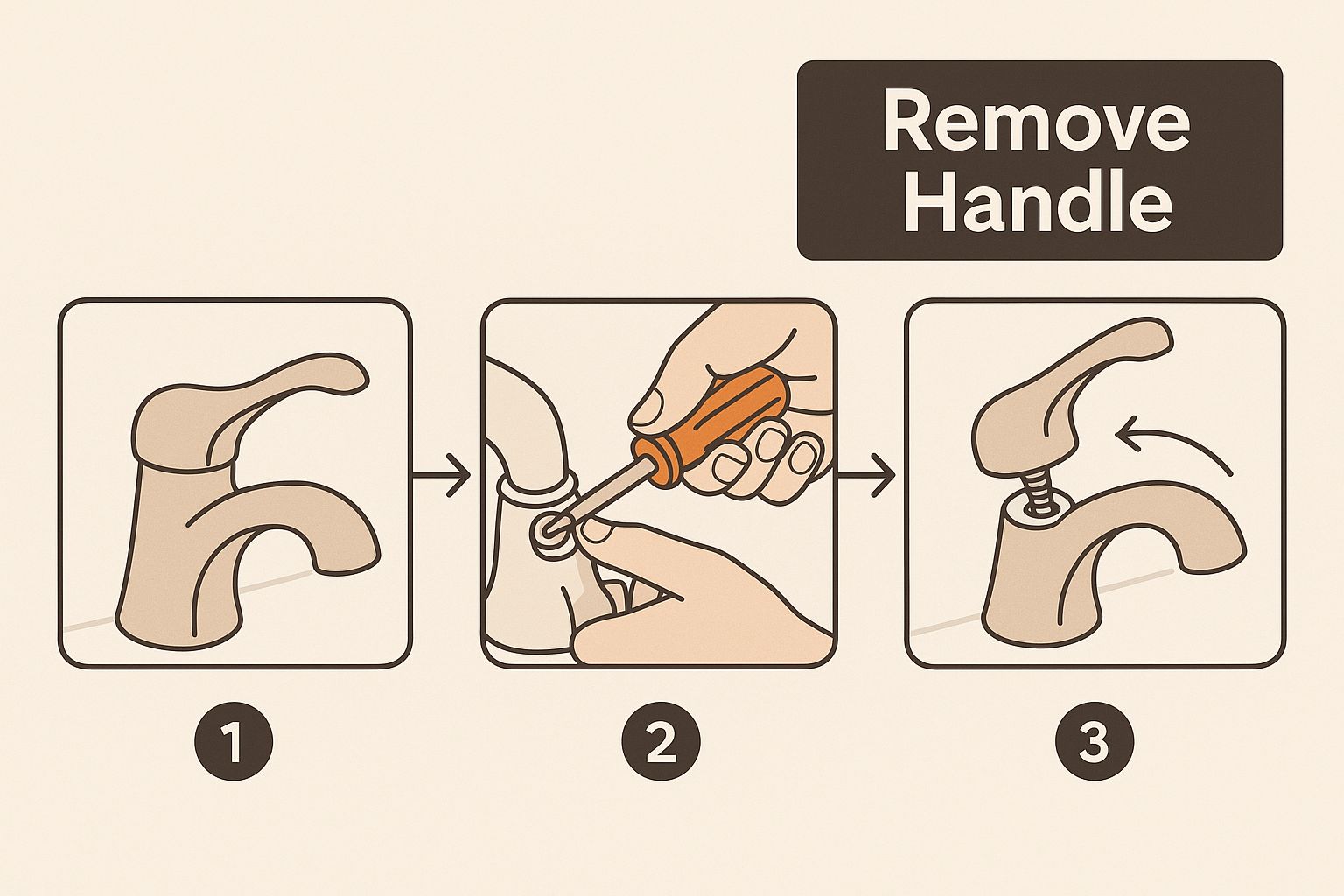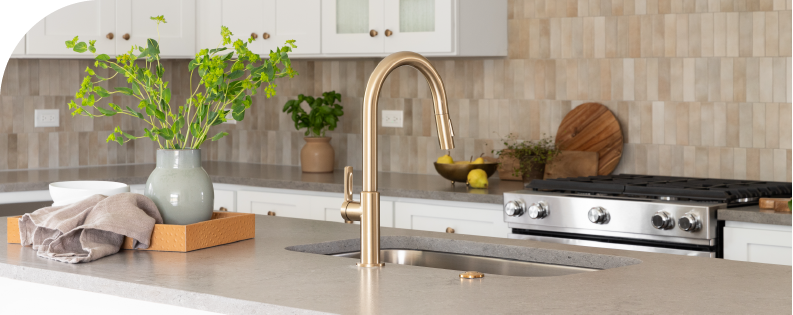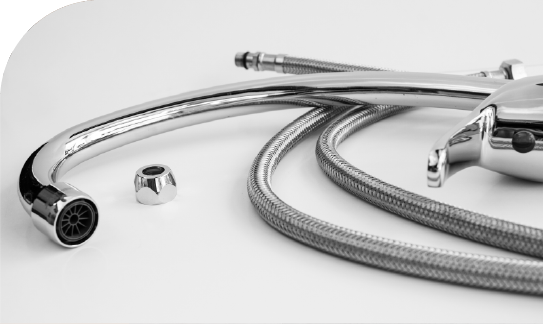Your Guide to Silencing a Dripping Shower
A dripping faucet is one of those small problems that quickly grows, wasting water and adding unnecessary costs to your utility bills. Before you grab a wrench and start taking things apart, it’s helpful to get the lay of the land. This guide will walk you through the entire process, from figuring out what’s wrong to putting the final piece back in place, so you know exactly what you’re getting into.
Here’s a quick look at what we’ll cover:
- Shutting off the water supply (the most important first step!).
- Gathering the right tools for the job.
- Getting the faucet handle and faceplate off.
- Swapping the old, faulty cartridge for a new one.
- Putting it all back together for a perfectly silent, drip-free shower.
Before we dive into the step-by-step, it helps to be certain about what you’re dealing with. Different symptoms can point to slightly different problems, though most roads lead back to that pesky cartridge.
This table breaks down the common signs of a leak, what’s likely causing it, and the best way to solve it.
Diagnosing Your Leaky Shower Faucet
| Symptom | Likely Cause | Primary Solution |
|---|---|---|
| Constant Drip from Spout | Worn-out or failed cartridge seals. | Replace the entire faucet cartridge. |
| Leak from Around the Handle | Damaged O-rings on the cartridge or valve body. | Replace the cartridge (most kits include new O-rings). |
| Trouble Turning Water On/Off | Mineral buildup or physical damage inside the cartridge. | Replace the cartridge. |
| Water Temperature Issues | The cartridge’s mixing valve has failed. | Replace the cartridge. |
As you can see, the cartridge is the usual suspect. Now, let’s look at why fixing it matters so much.
The Real Impact of a Small Drip
It might seem like a tiny issue, but that minor drip adds up fast. According to the U.S. Environmental Protection Agency’s WaterSense program, “the average household’s leaks can account for nearly 10,000 gallons of water wasted every year.” That number alone shows why knowing how to fix a leaky single handle shower faucet is such a valuable skill for any homeowner.
This isn’t just a household problem; it’s a major factor in the plumbing world. The global faucet market was valued at USD 23.28 billion in 2024 and is expected to keep growing, driven partly by the ongoing need for repairs and more water-efficient fixtures.
Assembling Your Faucet Repair Toolkit
The Essential Tools for the Job
For most single-handle faucet repairs, a basic set of tools will get you through. It’s a good idea to gather them all in one spot before you start taking things apart.
- Screwdrivers: Phillips head and a flathead.
- Allen Wrench Set.
- Pliers: A pair of needle-nose pliers.
- Utility Knife.
- Rags or Towels.
- Specialized Tools:
A faucet cartridge puller is a true game-changer. Over the years, mineral deposits can basically glue an old cartridge inside the valve body, making it nearly impossible to yank out with just pliers. This tool is designed to give you the perfect leverage to pull the cartridge straight out, cleanly and without damaging the plumbing around it.
Finding the Correct Replacement Cartridge
Okay, this is probably the most critical part of your prep work. There are literally hundreds of different faucet cartridges out there, and guessing is not an option. The wrong part just won’t fit, and your leak will still be there.
The most foolproof method? Take the old cartridge with you to a good hardware or plumbing supply store. The experts behind the counter can match it up for you just by looking at it. If you can’t do that, taking several clear photos of the old part from every angle is the next best thing.
Often, you’ll find a part number stamped right on the side of the cartridge itself. This is your golden ticket to finding an exact replacement. Nailing this step is the key to successfully learning how to fix a leaky single handle shower faucet and making sure your repair actually lasts.
First things first, and I can’t stress this enough: shut off the water supply to the shower. This is the most critical move to prevent turning a small drip into a major flood.
With the water off, the next stage is a careful disassembly of the faucet to get to the bad cartridge. This usually involves removing the handle, which often has a tiny set screw hidden away, and then taking off the decorative faceplate. Once they’re out of the way, you’ll see the retaining clip that’s holding the old cartridge in place.

Accessing the Old Cartridge
Start by turning off the water, either to the whole house or just the bathroom if you’re lucky enough to have isolated shutoff valves. A good practice is to open the faucet afterward to let any trapped water drain out.
Now, look for the decorative cap on the handle—it often has a hot/cold logo. Gently pry it off with a utility knife or a small flathead screwdriver. This will expose the set screw that secures the handle to the valve stem. Use the right Allen wrench or screwdriver to loosen it, and then pull the handle straight off.
Pro Tip: If the handle is stuck solid from mineral buildup, don’t just yank on it. You can try gently tapping it with the handle of your screwdriver. Another trick is to wrap it in a rag and use pliers to carefully wiggle it loose. A little patience here will save you from scratching or damaging the finish.
Once the handle is off, you’ll see the escutcheon, or faceplate. These are usually held in place by two or more long screws. Unscrew them and put the plate somewhere safe. You should now have a clear view of the valve body and the top of the cartridge.
Removing and Replacing the Cartridge
You’re in. You should now see a small, often U-shaped, retaining clip that holds the cartridge in place. Grab your needle-nose pliers or a flathead screwdriver and carefully pull this clip straight up and out. Don’t lose this little guy!
The old cartridge is now free, but getting it out can be the trickiest part of the whole job. If it’s really stubborn, a cartridge puller tool is worth its weight in gold. If not, you can often use adjustable pliers to get a good grip on the cartridge stem and pull it straight out with a bit of wiggling.
With the old cartridge out, take a second to clean the inside of the valve body with a clean rag. You want to check for any leftover bits of rubber or debris from the old seals.
Now, slide the new cartridge into the valve body. Pay close attention to its orientation. Most cartridges have “hot” and “cold” markings or little notches that must line up correctly with the valve. Push it in firmly until it’s fully seated.
Finally, pop that retaining clip back in to lock the new cartridge down.
Putting It All Back Together
Reassembly is just doing everything you just did, but in reverse.
- Reattach the faceplate with its screws.
- Slide the handle back onto the valve stem and tighten the set screw.
- Pop the decorative cap back on.
Now for the moment of truth. Turn the water supply back on slowly and check for any leaks around the handle or from the spout. If everything is dry, you’ve successfully learned how to fix a leaky single handle shower faucet.
For trickier situations or different faucet types, our comprehensive guide on how to fix a leaky shower faucet offers even more detail. Knowing this skill is incredibly useful. Single-handle faucets make up over 55% of global sales, and with the replacement market accounting for 65% of demand, it’s clear this is a common homeowner task. A reliable faucet is the cornerstone of a great shower system, and keeping it in top shape is key.
What to Do When the Repair Doesn’t Go as Planned
Even the most straightforward DIY project can throw you a curveball. When you’re tackling a leaky single-handle shower faucet, knowing how to pivot when things get tricky is just as crucial as following the steps perfectly. Think of this as your guide for those “Oh, now what?” moments.
Sometimes, the real challenge isn’t the fix itself but a stubborn part that refuses to cooperate. A handle that’s been on for years can feel like it’s been welded into place, thanks to a lovely combination of corrosion and mineral gunk from hard water.
Dealing with a Stuck Faucet Handle
If that faucet handle just won’t budge, your first instinct might be to yank on it. Don’t. Brute force is a great way to damage the handle’s finish or, even worse, snap the valve stem it’s attached to.
Try a few gentle taps with the plastic end of a screwdriver right around the handle. This can sometimes be just enough to shock the connection loose. If it’s still stuck fast, grab a penetrating oil designed to eat through rust and lime scale. Apply it sparingly around the base of the handle and let it soak in for 15-20 minutes before you try wiggling it again.
One of the most common hangups I see is a stripped set screw. Your Allen wrench just spins and spins, right? It’s infuriating. Before you give up, try tapping in a slightly larger Torx (star-shaped) bit. The sharp edges can often bite into the stripped hex screw and give you enough grip to turn it. If that fails, a dedicated screw extractor kit is a lifesaver and a worthy addition to any DIYer’s toolbox.
When the Old Cartridge Breaks During Removal
Here’s another classic headache: the old, brittle plastic cartridge cracks or completely falls apart as you’re pulling it out. This is incredibly common with older faucets where the plastic has become fragile over the years. If the main body of the cartridge snaps, leaving the base wedged inside the valve, take a deep breath. It’s salvageable.
You’ll need a good pair of needle-nose pliers to start carefully picking out the broken plastic pieces. Work methodically. You need to get every last shard of plastic and every bit of the old rubber O-rings out of there. For really stubborn remnants, you might need to invest in a specialized cartridge puller tool. These are designed specifically to latch onto what’s left of the cartridge and give you the leverage to pull it out cleanly.
If you find yourself in this situation, our detailed guide on how to remove a shower cartridge offers a more in-depth walkthrough to get you through it.
Learning how to navigate these little repair hiccups is what separates a frustrating afternoon from a successful project. And these principles of careful disassembly and part replacement aren’t just for faucets. When you run into other issues around the house, checking out proven leak repair methods can give you a broader understanding of how these same strategies apply to all sorts of home repairs.
Sometimes a simple repair is a sign that it’s time for an upgrade that will completely change your daily routine. For a truly reliable and luxurious experience, consider the integrated performance and modern design of a CRANACH single handle faucets.










